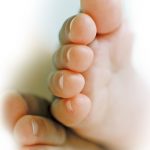
By Janis Roszler, MSFT, RD, CDE, LD/N Choosing healthy beverages can help prevent weight gain and higher blood glucose levels, so it’s important to know that some drinks are better for you than others. Read on to learn more about some common drinks to help you make better choices. WATER AND SELTZER Your body needs water to stay healthy. Water helps flush toxins out, transports food to your cells and keeps your nasal tissues and other areas of your body moist. If you don’t have enough water in your system, you can become dehydrated. Even mild dehydration can drain your energy and make you tired. Water and seltzer are great drink choices because they don’t contain calories, carbs or fat and won’t affect your blood glucose levels. Water is an important part of all of our lives, but don’t believe the myth that drinking large amounts of water speeds up metabolism, flushes out extra calories or helps to increase weight loss. VEGETABLE JUICE If you aren’t a veggies fan or don’t have time to prepare them each day, enjoy some vegetable or tomato juice. Each is rich in vitamins and minerals that can help your body grow and stay strong. Vegetable and tomato juices are very low in calories and don’t contain many carbs. MILK Milk contains calcium, vitamin D and protein—-nutrients your body and bones need to stay strong. When it comes to milk, go for fat-free because it has fewer calories. If you don’t like the taste of fat-free, then opt for the next best choice: 1%. You can also try low-fat chocolate milk, but limit your intake because it has more carbs than regular milk. If you can’t drink milk, try enriched soy, rice, seven-grain, almond or oat milk. Check the label for the serving size and carbohydrate amounts. HIGH CARBS Fruit smoothies Chocolate milk Lemonade More than 1 cup of juice, fruit punch or sports drinks SOME CARBS Light juice Diet fruit juice drinks Vegetable juice Skim/low-fat milk Nonfat/low-fat soy milk Sugar-free hot cocoa NO CARBS Water/seltzer Flavored water Diet iced tea Diet soda Other diet soft drinks FRUIT JUICE Pure fruit juice gets its sweetness from natural fruit sugars. It provides a variety of vitamins and minerals but can raise your blood glucose level, so be sure to include the juice amount in your meal plan. An 8-ounce glass of orange juice has as many carbs as two small oranges. You also can buy light juice, which has fewer carbs and calories. SODA AND OTHER SOFT DRINKS Regular soda, fruit punch, fruit juice blends and other fruit drinks often contain large amounts of sugar or high fructose corn syrup that can make you gain weight. They also offer little nutrition. Most sports drinks contain high fructose corn syrup, so if you drink them, be sure to count the carbs. DIET SOFT DRINKS These drinks have few or no calories, so they can be a good choice once in a while. But they may not be the best option for weight loss. A recent study showed that older people who drank two or more diet soft drinks each day gained more weight in their waist area than those who didn’t drink them.
The post Drink To Better Health appeared first on Winter 2017 Issue | CDiabetes Online Magazine.
]]>
The post Drink To Better Health appeared first on Winter 2017 Issue | CDiabetes Online Magazine.
]]>
By Erin Palinski-Wade RD, LDN, CDE When it comes to controlling your blood glucose, you have probably researched the impact of everything from food, to exercise, to weight control. But have you looked into how spices may impact it? Cinnamon is a spice that doesn’t just add great flavor to foods; it may help to lower blood glucose as well. The best benefit it offers is that it’s all-natural and considered safe for most people with diabetes. Does it sound too good to be true? In Medieval times, cinnamon was used for medicinal purposes thanks to its high antioxidant properties. Research now shows us that it may be a powerful player in the fight against diabetes. Cinnamon may help to lower blood glucose levels by decreasing insulin resistance. When your cells become resistant to insulin, the glucose-lowering hormone in your body, they do not allow insulin to carry glucose into your cells. This results in glucose remaining in your bloodstream and rising over time, eventually leading to diabetes. Both whole cinnamon and extracted cinnamon have been shown to lower blood glucose levels. Cinnamon has also been shown to help reduce unhealthy LDL cholesterol levels and blood pressure, both of which are conditions that can increase your risk of heart disease. One down side is that everything that Mother Nature puts into the cinnamon plant also ends up in the finished product. This includes water soluble as well as fat soluble compounds. Our bodies have no problem processing water soluble compounds, but fat soluble compounds tend to be stubborn for our bodies to digest. When choosing a form of cinnamon, we suggest you look for a water extracted concentrate without the fat soluble compounds. Water extracted forms can maximize the health benefits, while minimizing the risks of fat soluble buildup. The extraction process allows the beneficial water soluble components of cinnamon to stay, providing you with the same health benefits of whole cinnamon in a much smaller portion. When looking for water extracted cinnamon, it’s important that you read the label and look specifically for the term “water extracted.” Because it is more concentrated, you can take fewer capsules to get all the health benefits of cinnamon. This may be more practical than trying to incorporate large amounts of whole cinnamon into your meal plan. CinSulin Water-extracted cinnamon is backed by five human clinical studies, all of which are double blind, peer reviewed and published. In addition, UC Davis completed a meta analysis to validate the results of these human clinical studies. They found support that water extracted cinnamon lowered fasting blood glucose an average of 10%. If you are considering using cinnamon to help control blood glucose levels, make sure you discuss this with your certified diabetes educator or other healthcare provider. If you use cinnamon in combination with other medicines or supplements that also lower glucose levels, you may increase your risk of hypoglycemia. Your healthcare provider can work with you to make sure you incorporate cinnamon into your diabetes treatment plan in a way that works best for you.
The post How Water Extracted Cinnamon Can Improve Your Blood Glucose Control appeared first on Winter 2017 Issue | CDiabetes Online Magazine.
]]>
By Erin Palinski-Wade RD, LDN, CDE
When it comes to controlling your blood glucose, you have probably researched the impact of everything from food, to exercise, to weight control. But have you looked into how spices may impact it? Cinnamon is a spice that doesn’t just add great flavor to foods; it may help to lower blood glucose as well. The best benefit it offers is that it’s all-natural and considered safe for most people with diabetes.
Does it sound too good to be true? In Medieval times, cinnamon was used for medicinal purposes thanks to its high antioxidant properties. Research now shows us that it may be a powerful player in the fight against diabetes.
Cinnamon may help to lower blood glucose levels by decreasing insulin resistance. When your cells become resistant to insulin, the glucose-lowering hormone in your body, they do not allow insulin to carry glucose into your cells. This results in glucose remaining in your bloodstream and rising over time, eventually leading to diabetes. Both whole cinnamon and extracted cinnamon have been shown to lower blood glucose levels. Cinnamon has also been shown to help reduce unhealthy LDL cholesterol levels and blood pressure, both of which are conditions that can increase your risk of heart disease.
One down side is that everything that Mother Nature puts into the cinnamon plant also ends up in the finished product. This includes water soluble as well as fat soluble compounds. Our bodies have no problem processing water soluble compounds, but fat soluble compounds tend to be stubborn for our bodies to digest.
When choosing a form of cinnamon, we suggest you look for a water extracted concentrate without the fat soluble compounds. Water extracted forms can maximize the health benefits, while minimizing the risks of fat soluble buildup. The extraction process allows the beneficial water soluble components of cinnamon to stay, providing you with the same health benefits of whole cinnamon in a much smaller portion.
When looking for water extracted cinnamon, it’s important that you read the label and look specifically for the term “water extracted.” Because it is more concentrated, you can take fewer capsules to get all the health benefits of cinnamon. This may be more practical than trying to incorporate large amounts of whole cinnamon into your meal plan.
CinSulin Water-extracted cinnamon is backed by five human clinical studies, all of which are double blind, peer reviewed and published. In addition, UC Davis completed a meta analysis to validate the results of these human clinical studies. They found support that water extracted cinnamon lowered fasting blood glucose an average of 10%.
If you are considering using cinnamon to help control blood glucose levels, make sure you discuss this with your certified diabetes educator or other healthcare provider. If you use cinnamon in combination with other medicines or supplements that also lower glucose levels, you may increase your risk of hypoglycemia. Your healthcare provider can work with you to make sure you incorporate cinnamon into your diabetes treatment plan in a way that works best for you.
The post How Water Extracted Cinnamon Can Improve Your Blood Glucose Control appeared first on Winter 2017 Issue | CDiabetes Online Magazine.
]]>
By Johanna Burani, MS, RD, CDE You know that eating healthy meals helps you to have a healthy body. That’s especially true if you have diabetes or prediabetes. What you eat can help you control your blood glucose, your blood pressure, your choles-terol and your weight. The best place to start making good food choices is to look at your food plate. Think of it as having four parts that you fill up at every meal. The two big parts are for your starches or grains, like rice, corn, beans, pasta or bread, and for your vegetables, like carrots, broccoli, spinach, tomatoes and salads. The two small parts of your plate are for your protein-based foods, like chicken, fish, eggs and cheese, and for your fruit, like apples, peaches, berries and oranges. When all four parts of your plate are filled in this way, you have a well-balanced meal. You don’t have to change everything all at the same time. You can choose one way to improve your diet and work on that until you feel comfortable with it. Then you can go on to another change. For example, you may choose to drink water with all your meals but allow yourself one can of soda per week. Once that change is part of your diet, you can try something else, like eating more vegetables. Make small changes that feel good to you and, little by little, you will improve your diet. You will find your own easy ways to eat healthy. 4 PARTS TO YOUR PLATE 2 parts of your plate are for your starches or grains and your vegetables. 2 parts of your plate are for your protein-based foods and your fruit. 7 STEPS TO BETTER FOOD CHOICES Try to eat the right number of calories. Enjoy your food but eat less of it. If you eat large portions, make them smaller. Burn extra calories with exercise. Eat slowly. Pay attention to your food and enjoy it. Use a smaller plate to help you eat less. If you are in a restaurant, share a meal with someone or bring some of it home to eat at another time. Eat vegetables, fruits, whole grains and fat-free or 1% milk and yogurt every day. Eat less of these foods: cakes, cookies, ice cream, candies, soda, energy and sports drinks, pizza, soups, frozen meals, ribs, sausages, bacon and hot dogs. Try to drink mostly water every day and save your favorite sugary drink for a special treat.
The post MAKING BETTER FOOD CHOICES appeared first on Winter 2017 Issue | CDiabetes Online Magazine.
]]>
The post MAKING BETTER FOOD CHOICES appeared first on Winter 2017 Issue | CDiabetes Online Magazine.
]]>
By Johanna Burani, MS, RD, CDE We all know what it is like to go through the day feeling tired. We do our work throughout the day and can’t wait for the day to end. If we get a good night of sleep, we wake up rested and are ready to start all over again. We have the energy we need all day long. But what if we don’t get enough sleep? What if we have many nights when we are very tired, fall asleep for a short time then wake up and cannot fall back to sleep? More than 70 million Americans suffer from chronic sleep loss. Women have more of a problem falling asleep and staying asleep than men. More than 2 million children have sleep disorders and even more just don’t get enough sleep on many nights. Most adults need between 7–9 hours of sleep every night. When we don’t get enough sleep night after night, we build up a large sleep debt that is hard to pay back. Then we are tired all the time and don’t have enough energy. WHY WE NEED TO SLEEP First, the body needs some “time off” to rest and take care of itself. Sleep gives the body a chance to slow down its workload and rest different parts, such as the brain, heart, muscles and the organs that digest our food all day long. The body doesn’t shut off when we sleep, it just slows down. This allows our body parts to relax for seven, eight or nine hours. A tired body doesn’t work as well as a rested one, and chronic lack of sleep can cause health problems. SLEEP AND DIABETES It is very important to get enough sleep if you have diabetes or prediabetes. If you are tired, your body tries to get energy by eating more, which can raise the glucose level in the blood. Gaining weight makes it harder to have good diabetes control. The body needs insulin to keep its glucose level from getting too high. If your pancreas is unable to make enough insulin, your glucose level will climb higher. Lack of sleep also makes the muscle cells less likely to take in glucose from the bloodstream. Good diabetes control will help you sleep better. You will not need to go to the bathroom many times during the night if your blood glucose numbers are in a healthy range. You will sleep better and feel more rested in the morning. GET ENOUGH SLEEP No matter what the age is, the body tells us when it needs sleep. We are cranky and lack energy. We have a hard time doing work. And we may start to gain weight if we don’t sleep enough. If you need an alarm clock to wake up each morning, you may not be getting enough sleep. SLEEP AND WEIGHT GAIN Some studies show that we gain weight more easily when we don’t sleep enough. That’s because sleep affects some important hormones in the body. Lack of sleep affects the part of the brain that controls hunger. It is affected by two hormones, called ghrelin and leptin. Ghrelin (the “gimme more” hormone) tells the brain when we are hungry. When ghrelin levels in the stomach are high, the brain triggers us to eat more food. Leptin (the “leave me alone” hormone) tells the brain that we feel full. When leptin levels, which come out of fat cells, are high, the brain senses that the body is full and doesn’t need more food, so we don’t want to eat. When we don’t sleep enough, our ghrelin levels go up and our leptin levels go down. This means that when we eat after a poor night of sleep, we don’t feel full and keep on eating. We aren’t hungry, but our tired body tells our brain that we are. If we lack sleep night after night and eat more while awake, we can gain weight over time. Another hormone that changes with too little sleep is growth hormone. That hormone helps control how much fat we burn and how fast we increase our muscle mass. Growth hormone is released while we sleep. The less we sleep, the less growth hormone there is in the body. That leads to weight gain because we burn less fat. Finally, the lack of sleep will affect another hormone, cortisol. Cortisol encourages the body to store fat, especially in the belly area. These hormones send unhealthy messages to the brain that lead us to eat more food when we are tired. This is a big problem because the fast-paced American lifestyle seems to promote less sleep and those who are hungry can usually find food to eat at any hour. WHEN TO SEE YOUR DOCTOR If you are worried about your poor sleeping habits or think you sleep enough but are always tired, speak to your doctor. With the right care, you may feel much better and also find that the weight you have been trying to lose is finally coming off—in your sleep. 12 benefits of sleep More energy Better general health Healthier heart Weight control Improved immunity Longer life Improved memory Improved mood Lower stress Improved ability to learn Improved ability to focus on work Accident avoidance 8 Sleep experts believe these tips may help you sleep better: Do try to go to bed at the same time every night. Don’t exercise 2–4 hours before bedtime. Do leave the bedroom for a short time when you can't sleep. Don’t eat heavy, spicy or greasy foods 4–6 hours before bedtime. Do try to make the bedroom quiet, dark and comfortable. Don’t drink caffeine or alcohol 4–6 hours before bedtime. Do drink warm milk or take a hot shower or bath one hour before bedtime. Don’t nap during the day.
The post GET THE SLEEP YOU NEED appeared first on Winter 2017 Issue | CDiabetes Online Magazine.
]]>
The post GET THE SLEEP YOU NEED appeared first on Winter 2017 Issue | CDiabetes Online Magazine.
]]>
By Joy Pape, RN, BSN, CDE, WOCN, CFNC You may have heard that having diabetes increases your risk for foot problems, including amputations. The good news is that there is a lot you can do to keep this from happening to you. Learn and follow these diabetes foot care tips to help prevent problems with your feet. ? MANAGE YOUR DIABETES Do all that you can to keep your blood glucose, blood pressure and cholesterol (lipids) in their target ranges. This is your first step—and one of the most important ones— toward protecting your feet. ? NEVER WALK BAREFOOT Walking barefoot gives you no protection against stepping on something, dropping something on your foot or being stepped on. Wear water shoes at the beach and keep slippers near your bed so you can get to them easily in the middle of the night. ? PROTECT YOUR FEET FROM HOT OR COLD TEMPERATURES Cold causes your blood vessels to constrict, which can decrease circulation. On the other hand, heating pads, hot water bottles, electric blankets or putting your feet on radiators, fireplaces or space heaters can cause burns if you are unable to sense the temperature. Use wool blankets or comforters to keep warm instead. Keep your feet warm with wool or cotton socks. ? WEAR SHOES THAT PROTECT YOUR FEET High heels put pressure on the balls of your feet, which can cause blisters, open sores, calluses and bunions, among other problems. Also, sandals and flip-flops provide almost no protection for your feet. ? BE A FOOT DETECTIVE Look at your bare feet every day. Look at the tops, bottoms and in between your toes for redness, bruises, blisters, cuts, swelling, a shift in the color or temperature of your skin and other changes. By looking at your feet daily, you will notice changes right away. Report any changes to your health-care provider immediately. ? IF YOU SMOKE,TRY TO STOP Smoking causes your blood vessels to become narrow. Diabetes increases your risk for blood vessel disease. The two together can decrease the blood flow that carries oxygen to your legs and feet. A lack of oxygen makes it much harder for wounds to heal. Get help by asking your healthcare provider to refer you to a program that can help you stop smoking. ? KEEP YOUR FEET CLEAN AND DRY You don't need to do more than take your usual shower. Do not soak your feet unless your healthcare provider directs you to do. Dry your feet well—especially between your toes. Use lotion if your skin is dry to keep it soft and protect against drying and cracking. Putting socks on immediately after you put on the lotion helps lock in the moisture. ? TRIM YOUR TOENAILS TO FOLLOW THE CURVE OF YOUR TOE Use an emery board to file the edges. If you cannot reach your toes or your nails are thick, have your toenails cut by a podiatrist. ? SEE A PODIATRIST Besides trimming your toenails, podiatrists provide the foot care and education you need. Don’t practice podiatry yourself, which means don’t use anything sharp on your feet, and don’t use any over-the-counter medicines on your feet, such as wart, corn or callus removers. See your podiatrist for those treatments. 30% Regularly seeing a podiatrist decreases amputations by 30%. ? GET HELP RIGHT AWAY If you have any changes in your feet, contact your healthcare provider immediately. Don’t put it off. Getting care early can mean getting and keeping your feet safe. Putting it off can lead to the problems you want to avoid.
The post For Healthy Feet appeared first on Winter 2017 Issue | CDiabetes Online Magazine.
]]>
The post For Healthy Feet appeared first on Winter 2017 Issue | CDiabetes Online Magazine.
]]>![tn_CinSulin_ad_2016[4x5]](http://www.keixun.com.cn/winter2017/wp-content/uploads/2016/01/tn_CinSulinVitBest_DigitalMay2017-400.jpg)

 Try to eat the right number of calories. Enjoy your food but eat less of it. If you eat large portions, make them smaller. Burn extra calories with exercise.
Try to eat the right number of calories. Enjoy your food but eat less of it. If you eat large portions, make them smaller. Burn extra calories with exercise.